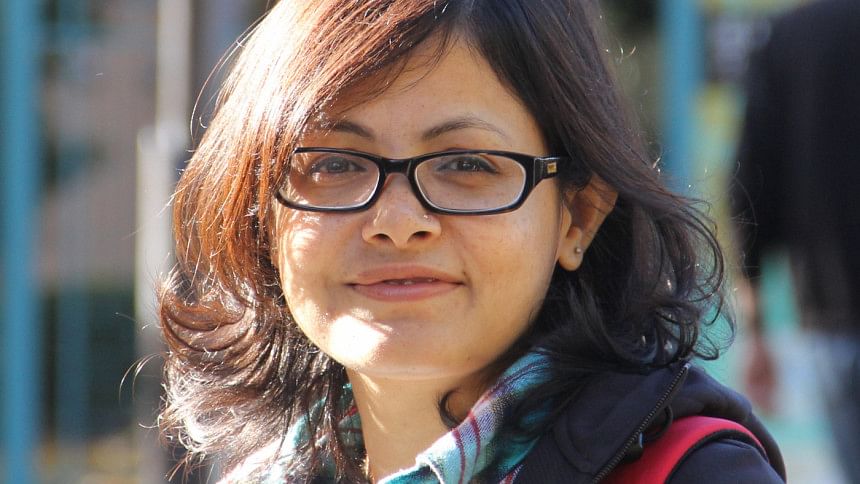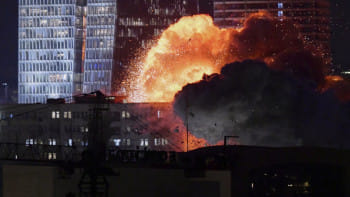Najmun Nahar Keya on her artistic inspirations

Najmun Nahar Keya's artistic journey began in Old Dhaka, where she grew up in the midst of beautiful architectural wonders and a family that encouraged her creative aspirations. Her artworks exhibit her inclination towards nostalgic memories, associated with archival photographs of her family, architectural beauty, new materials, recent societal and global political events, and personal experiences. Keya co-curated many shows before, but her first ever solo curated show is "Frozen Song", an exhibition inspired by architect Bashirul Haq, currently underway at "Chobi Mela Shunno".
She completed her SSC and HSC from South Mushendi Girls' High School and Dhaka City College respectively. She completed her BFA and MFA from the Faculty of Fine Art, University of Dhaka. During her university days, she worked on projects which portrayed the Iraq and Afghan war and a series with different stamps and images. She received the prestigious Monbukagakusho Japanese government scholarship and spent five years in Tokyo, where she did her second MFA.

"During my five years in Tokyo, alongside learning a new language and completing my second master's, my work was on duality; I was trying to find differences in sounds, posters, street signs, symbols, and humans between Dhaka and Tokyo," shares the artist. She was also accepted for Charles Wallace Fellowship in University of Stirling, England, in 2018. Currently, she is doing another fellowship as a visiting artist in The Lakshmi Mittal and Family, South Asia Institute of Harvard University.
"Even though I missed the hustling sounds of Dhaka, my time in Tokyo changed how I practice art, and how I think. It opened newer windows of imagination for me," she adds. "The way they uphold their roots, culture, and heritage deeply moved me. I was also fascinated by their strong sense of philosophy and their techniques of preserving artworks."
Keya believes that Bangladesh's artistic culture is strong, and it is the responsibility of the current practitioners to represent it. "Schooling is a standardised form of learning and doesn't necessarily allow the learners to think out of the box. Even for Fine Arts students, it is no different," she says. "I realised after returning to Bangladesh that art needs to be accepted as a profession by not only the masses, but also by the artists themselves."
During the pandemic, Keya was faced with a creative block, but later, she revived her artistic spirit by having regular online addas with other artists, where they discussed her life and work. "It helped all of us to take our minds off of the stress. Over time, I ended up producing some artworks," she says.
She further discusses how she thought of the concept for "Frozen Song". "I came up with the name, Frozen Song, by drawing connections with a famous quote by Johann Wolfgang von Goethe, who referred to architecture as frozen music," she says. Much like Haq's work, she made use of open space and allowed artists from different generations to use many different types of materials and tell their own stories, while resonating the imaginations of Haq through their work. The featured artists in this exhibition are Jewel A Rob, Dilara Begum Jolly, Efat Razowana Reya, Reaz Rahman and Promotesh Das Pulak.
Keya urges people who are gifted with the understanding of creativity and art to continue their work with positivity. "All of their small efforts will bring about notable changes in the history of Bangladesh's fine arts sector," she concludes.

 For all latest news, follow The Daily Star's Google News channel.
For all latest news, follow The Daily Star's Google News channel. 



Comments